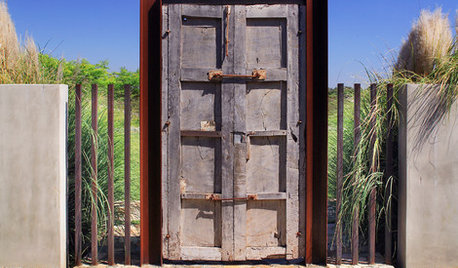My woods are being taken over by Japanese Stilt Grass
mollyjenning
18 years ago
Featured Answer
Sort by:Oldest
Comments (14)
JAYK
18 years agoRelated Professionals
Jackson Landscape Contractors · Wake Forest Landscape Contractors · El Reno Landscape Contractors · Melrose Park Landscape Contractors · Oak Harbor Landscape Contractors · Rockville Landscape Contractors · St. Louis Landscape Contractors · West Coon Rapids Landscape Contractors · Charlotte Fence Contractors · Millbrae Fence Contractors · Pennsauken Fence Contractors · Silver Spring Fence Contractors · Conyers Siding & Exteriors · Kannapolis Siding & Exteriors · Millburn Siding & ExteriorsTreedoc66
18 years agomollyjenning
18 years agomollyjenning
18 years agomollyjenning
18 years agoIris GW
18 years agokatob Z6ish, NE Pa
18 years agoaisgecko
18 years agomollyjenning
18 years agoJAYK
18 years agomyrmecodia
18 years agoturbo_tpl
18 years agobrenda_near_eno
18 years ago
Related Stories

ARCHITECTUREStilt Houses: 10 Reasons to Get Your House Off the Ground
Here are 10 homes that raise the stakes, plus advice on when you might want to do the same
Full Story
APARTMENTSHouzz Tour: Modern Japanese Penthouse Atop a Designer’s Office
Vintage obis, petrified wood, Samurai armbands and antique fans are just a few of the materials that warm this California apartment
Full Story
GARDENING GUIDESGarden Myths to Debunk as You Dig This Fall and Rest Over Winter
Termites hate wood mulch, don’t amend soil for trees, avoid gravel in planters — and more nuggets of garden wisdom
Full Story
URBAN GARDENSIn London, a Crowded Patch of Grass Becomes a Patio for Entertaining
A chic combo of wood siding, clever plantings and lots of elegant sandstone transforms a plain garden into a stylish space
Full Story
LANDSCAPE DESIGNIs It Time to Consider Fake Grass?
With more realistic-looking options than ever, synthetic turf can be a boon. Find the benefits and an installation how-to here
Full Story
BATHTUBSRoom of the Day: Restorative Power of a Japanese Soaking Tub
A traditional tub made of hinoki wood sets a calming tone in this master bath renovation
Full Story
MATERIALSMesquite: The Brawny Beauty for All Over the Home
Denser than other hardwoods and sporting beautiful coloration, mesquite makes a fine material for flooring, countertops, furniture and more
Full Story
TREES11 Japanese Maples for Breathtaking Color and Form
With such a wide range to choose from, there’s a beautiful Japanese maple to suit almost any setting
Full Story
GROUND COVERSNative Alternatives to English Ivy, Japanese Pachysandra and Periwinkle
These shade-loving ground covers are good for the environment and say something about where you are
Full Story
GARDENING GUIDESSmall Gem Lawns: More Impact From Less Grass
Instead of letting the lawn sprawl, make it a shapely design element in your yard. You’ll reap benefits both practical and aesthetic
Full Story






Iris GW